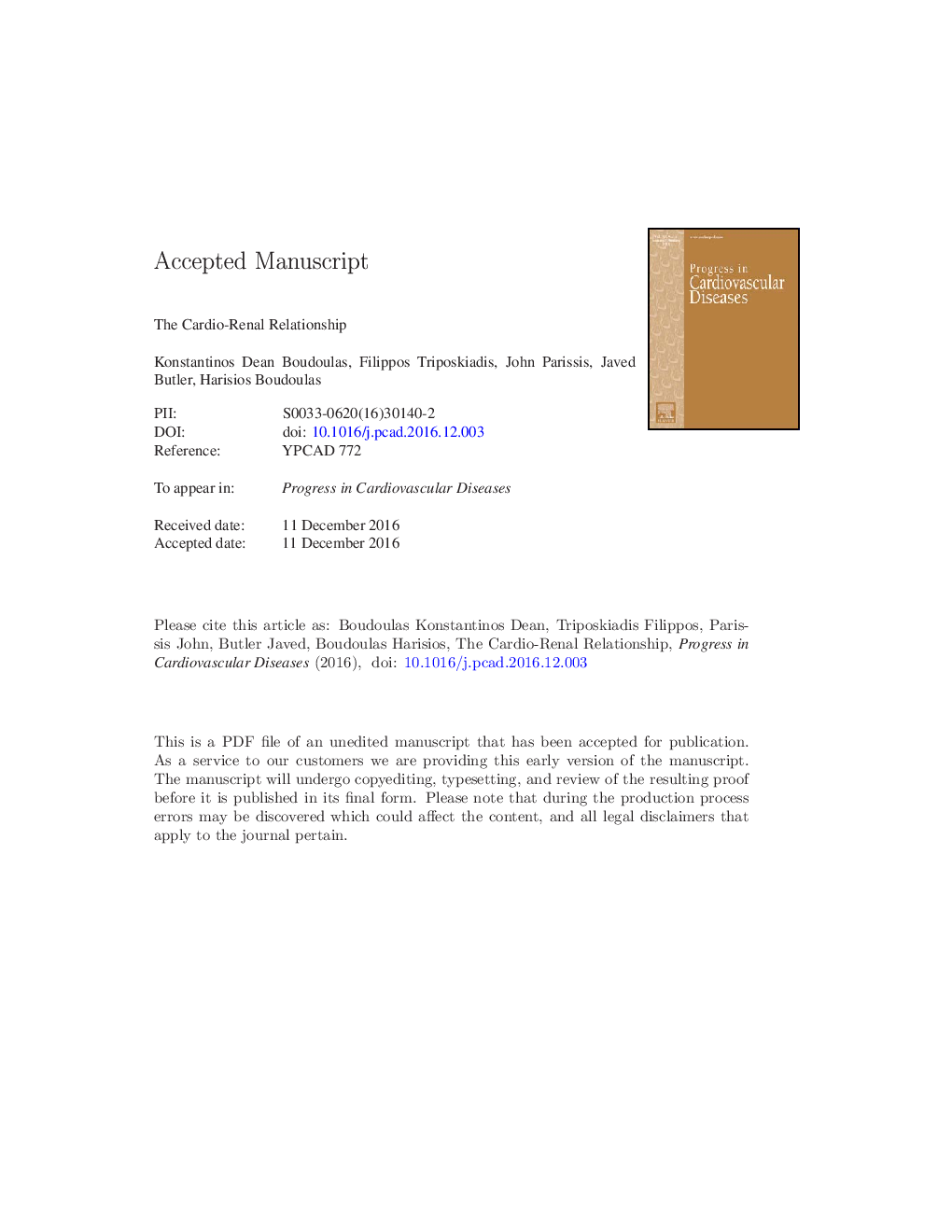| Article ID | Journal | Published Year | Pages | File Type |
|---|---|---|---|---|
| 5619566 | Progress in Cardiovascular Diseases | 2017 | 38 Pages |
Abstract
The heart and the kidney are of utmost importance for the maintenance of cardiovascular (CV) homeostasis. In healthy subjects, hemodynamic changes in either organ may affect hemodynamics of the other organ. This interaction is fine-tuned by neurohumoral activity, including atrial natriuretic peptides, renin-angiotensin aldosterone system and sympathetic activity. Dysfunction or disease of one organ may initiate, accentuate, or precipitate dysfunction or disease state in the other organ, often leading to a vicious cycle. Further, the interaction between the heart and the kidney may occur in the setting of processes and diseases that may affect both organs simultaneously, such as advanced age, hypertension, diabetes mellitus, atherosclerosis, etc. In this regard, a stiff aorta that occurs with aging due to mechanical stress may independently initiate or precipitate dysfunction and disease in the heart and the kidney. All of these factors contribute to a high prevalence of coexistent CV and kidney disease, especially in the elderly. In advanced kidney disease, hemodynamic and neurohumoral homeostasis are lost, volume and pressure overload may coexist, and the elimination of certain pharmacologic agents may be substantially impaired. Thus, coexistence of CV and kidney disease complicates diagnosis, propagates pathophysiology, adversely affects prognosis, and hinders management.
Keywords
PWVNAGSNSIL-18GFRCystatin-CLVHNGALCysCCHDHTNL-FABPH-FABPHFrEFHFpEFVHDMERIT-HFBNPRAASANPCRSACE-IKIM-1ARBaldosterone antagonistsAngiotensin converting enzyme inhibitorsInterleukin-18Beta-blockerCardiac outputleft ventricle or ventricularcoronary artery diseasecoronary heart diseasecardiovascular diseasevalvular heart diseasechronic kidney diseasekidney diseaseDiabetes mellitusCVDPulse wave velocityCardiorenal syndromeRenin-angiotensin-aldosterone systemsympathetic nervous systemHypertensionBlood pressureAtrial fibrillationcardiovascularneutrophil gelatinase-associated lipocalinAngiotensin receptor blockerKidney injury molecule-1heart failureCKDGlomerular filtration rateNitric oxideLeft ventricular hypertrophyNatriuretic peptidebrain natriuretic peptideatrial natriuretic peptide
Related Topics
Health Sciences
Medicine and Dentistry
Cardiology and Cardiovascular Medicine
Authors
Konstantinos Dean Boudoulas, Filippos Triposkiadis, John Parissis, Javed Butler, Harisios Boudoulas,
